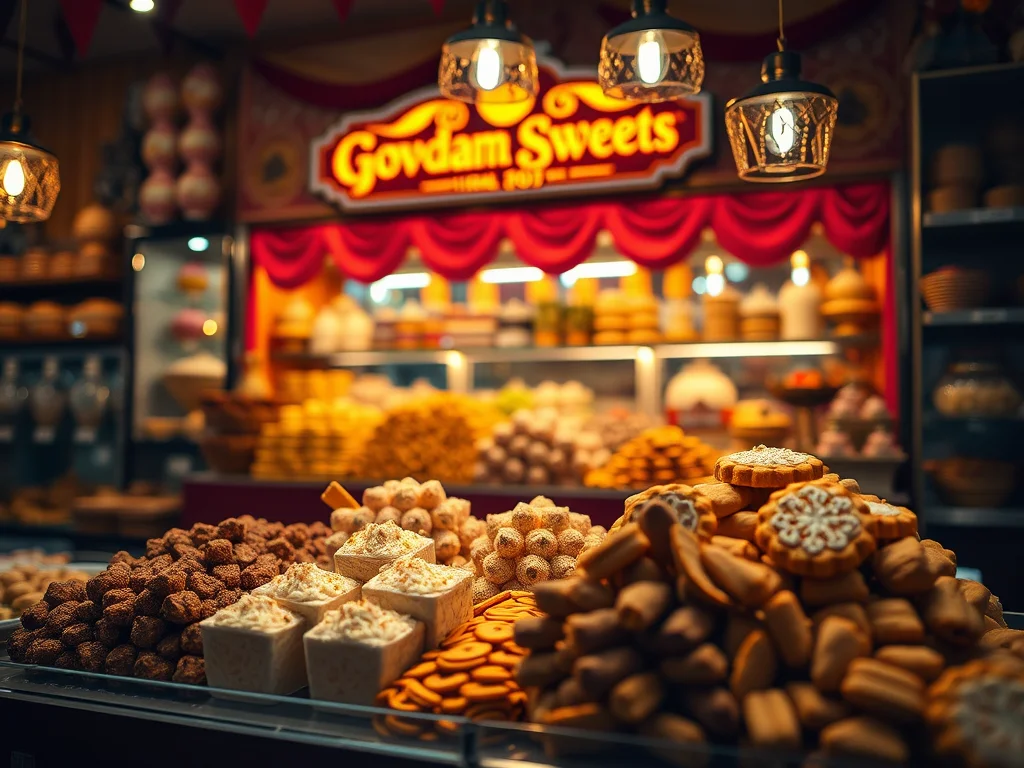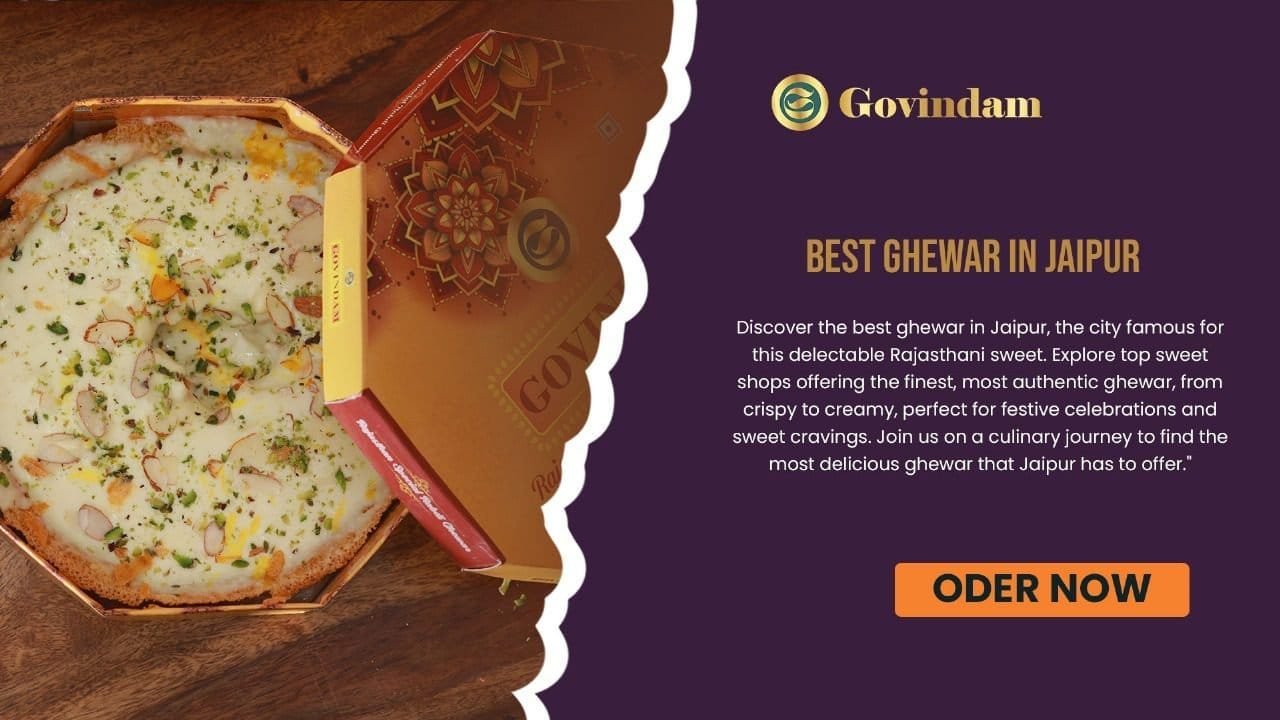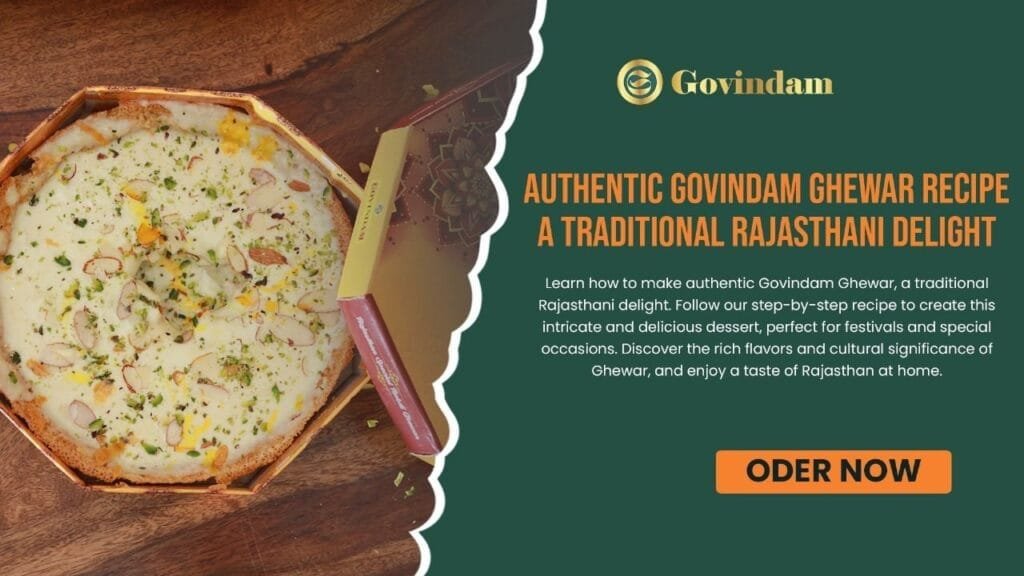
Posts
Traditional Ghewar Recipe Authentic Rajasthani Delight Guide

Discover the traditional Ghewar recipe featuring authentic Rajasthani preparation techniques, essential ingredients, step-by-step instructions, and expert tips for achieving the characteristic honeycomb structure. Learn about ingredient ratios, temperature control, cultural significance, common challenges, and why this intricate monsoon sweet represents Rajasthan’s finest confectionery artistry.
Traditional Ghewar Recipe: Authentic Rajasthani Delight
Introduction: The Art and Challenge of Authentic Ghewar
The traditional Ghewar recipe represents one of Indian confectionery’s most challenging and rewarding preparations—an intricate honeycomb sweet requiring specialized skills, precise technique, patient practice, and deep understanding of ingredient interactions, temperature dynamics, and traditional methods that generations of Rajasthani halwais (sweet makers) perfected over centuries. This iconic monsoon dessert distinguishes itself through distinctive circular disc shape, elaborate perforated structure created through steam and precise batter manipulation, syrup-soaked sweetness, and cultural significance as Teej festival’s quintessential offering—making mastering the traditional Ghewar recipe a prestigious accomplishment demonstrating culinary expertise and cultural knowledge honoring Rajasthani heritage.
Understanding the traditional Ghewar recipe requires appreciating why this preparation earned reputation as specialty requiring artisan expertise rather than casual home cooking—the technical complexity creating proper honeycomb texture, the equipment requirements including large heavy kadhai (wok) and specific molds, the ingredient precision demanding exact ratios and temperatures, the skill development requiring extensive practice before achieving consistent results, and the cultural weight making imperfect Ghewar disappointing rather than acceptable given preparation difficulty relative to outcome expectations. These factors explain why most families purchase Ghewar from expert sweet makers rather than attempting home preparation, though understanding the traditional Ghewar recipe enriches appreciation for artisan craftsmanship and cultural heritage embodied in every perfect honeycomb disc.
Govindam Sweets maintains generations of traditional Ghewar recipe mastery through family expertise spanning decades of perfecting this intricate preparation. Shop now to experience authentic Ghewar through our complete collection featuring plain traditional, mawa-enriched, malai-topped, and paneer varieties—each demonstrating traditional recipe excellence and artisan skill. This comprehensive guide to the traditional Ghewar recipe explores authentic preparation methods, ingredient functions, technical requirements, common challenges and solutions, cultural contexts, and practical considerations whether attempting home preparation or developing deeper appreciation for expert-made Ghewar representing Rajasthan’s finest confectionery traditions.
Essential Ingredients for Traditional Ghewar Recipe
Flour Selection and Preparation
The foundation of traditional Ghewar recipe begins with refined wheat flour (maida) selection and preparation significantly impacting final texture and honeycomb formation. Quality refined flour with appropriate protein content, proper sifting removing lumps and incorporating air, and sometimes light roasting in minimal ghee developing flavor while slightly altering protein structure all contribute to batter characteristics enabling successful honeycomb creation. The flour quantity forms base ratio with other ingredients—typically 1 cup flour as starting measure—with all subsequent ingredients proportioned relative to this foundation.
The flour quality in traditional Ghewar recipe affects gluten development and batter structure during preparation. Some recipes specify cake flour or pastry flour rather than all-purpose refined flour, seeking lower protein content creating tender rather than tough texture. Regional variations and family recipes within traditional Ghewar recipe traditions reflect different flour preferences and preparation philosophies, with some halwais guarding specific flour brands or preparation techniques as trade secrets distinguishing their Ghewar from competitors.
Ghee: The Essential Fat Component
Pure desi ghee serves dual critical functions in traditional Ghewar recipe—both as batter ingredient creating richness and texture, and as frying medium enabling honeycomb formation through steam creation when cold batter contacts hot fat. The ghee quality dramatically impacts final taste, with pure cow ghee providing authentic flavor and aroma that substitutes like refined vegetable oil cannot replicate despite functional similarity for frying purposes. Traditional Ghewar recipe typically uses 2-3 tablespoons ghee in batter plus several cups for deep frying, making this preparation notably rich and requiring quality ghee investment for authentic results.
The ghee temperature management in traditional Ghewar recipe represents critical technical challenge requiring constant attention and adjustment. Too-cool ghee prevents proper honeycomb formation and batter sinking rather than floating, while excessively hot ghee burns batter before structure sets or creates irregular texture rather than proper perforations. Maintaining optimal temperature around 350-375°F (175-190°C) throughout preparation requires experience, vigilance, and often assistance from helper maintaining heat while primary cook focuses on batter pouring technique.
Milk and Water: Creating Proper Consistency
The liquid components in traditional Ghewar recipe combine milk and ice-cold water in specific ratios creating batter consistency enabling proper honeycomb formation. Whole milk (typically ¼ to ⅓ cup per cup flour) provides richness and assists emulsification, while ice-cold water (approximately equal to milk quantity) creates temperature contrast essential for steam generation when batter contacts hot ghee. Some traditional Ghewar recipe variations use only milk or only water, though most authentic preparations combine both liquids balancing richness, consistency, and functional properties.
The temperature of liquids in traditional Ghewar recipe matters significantly—cold temperatures creating steam effect upon contact with hot ghee that generates characteristic honeycomb structure. Some recipes specify adding ice cubes to batter maintaining cold temperature throughout preparation, while others keep batter container in ice bath preventing warming from ambient heat or repeated ghee exposure during extended preparation sessions producing multiple Ghewars from single batter batch.
Sugar Syrup: The Sweetening System
Sugar syrup preparation represents final crucial component in traditional Ghewar recipe, applied after frying to sweeten the otherwise bland fried batter structure. The syrup typically uses 1.5 to 2 cups sugar dissolved in equal water, cooked to one-string consistency (approximately 220°F/104°C), sometimes flavored with cardamom, rose water, or saffron adding aromatic complexity beyond simple sweetness. The syrup consistency affects final Ghewar texture—too thin creating excessive sogginess, too thick preventing proper absorption throughout honeycomb structure.
The syrup temperature and application timing in traditional Ghewar recipe require attention since hot Ghewar absorbs warm syrup more readily than cold, yet excessively hot combinations create immediate excessive absorption affecting texture negatively. Traditional practice often involves dunking freshly fried hot Ghewar in warm (not hot) syrup for several seconds, removing to drain excess, then allowing to cool completely enabling syrup redistribution and slight firming before serving or further garnishing.
Step-by-Step Traditional Ghewar Recipe Process
Batter Preparation and Resting
The traditional Ghewar recipe batter preparation begins combining sifted flour with ghee, rubbing together until mixture resembles coarse breadcrumbs with ghee evenly distributed. Gradually add cold milk whisking continuously, then incorporate ice-cold water in stages while whisking vigorously creating smooth batter without lumps. The consistency should resemble thin pancake batter or heavy cream—flowing freely but maintaining slight body—adjusted through careful water additions since batter too thick prevents proper honeycomb formation while excessively thin batter creates dense texture without adequate perforations.
The resting period in traditional Ghewar recipe allows flour hydration, gluten relaxation, and temperature equilibration, with most recipes specifying 30 minutes to 2 hours refrigerated resting before frying begins. Some traditional methods include adding small amount of baking powder or baking soda (¼ teaspoon per cup flour) to batter after initial rest, claiming improved honeycomb formation, though purist traditional Ghewar recipe versions avoid chemical leavening relying solely on steam generation for structure creation. The batter viscosity should remain pourable throughout preparation, sometimes requiring small cold water additions if thickness increases during extended use.
Equipment Setup and Preparation
Proper equipment arrangement proves essential for traditional Ghewar recipe success since technique requires both hands coordinating multiple tasks simultaneously. Heavy-bottomed deep kadhai or wok filled with several inches of ghee, stable heat source maintaining consistent temperature, Ghewar mold or ring (traditional brass or steel circular forms 4-8 inches diameter), ladle or small measuring cup for batter pouring, long-handled skimmer for Ghewar removal, and preparation area with draining station and syrup container all require organization before beginning cooking process.
The mold selection in traditional Ghewar recipe affects final appearance and texture, with traditional circular brass or steel molds featuring slightly tapered walls and removable centers enabling Ghewar release after frying. Some modern adaptations use cookie cutters or DIY molds fashioned from steel containers, though authentic results typically require purpose-designed Ghewar molds reflecting centuries of design evolution optimizing this specific preparation. Explore our Festival Special collection featuring traditionally prepared authentic Ghewar using proper equipment and techniques.
The Pouring Technique: Creating Honeycomb Structure
The signature pouring technique defines traditional Ghewar recipe difficulty and artistic mastery. Place mold in hot ghee ensuring complete submersion, pour small quantity of cold batter directly into mold center from height of 8-12 inches creating thin stream. The batter should immediately start forming bubbles and perforations as cold liquid contacts hot fat, with steam creating the characteristic honeycomb texture. Continue pouring in concentric circles from center outward, building layers gradually while maintaining consistent stream and circular motion creating even disc shape and uniform texture throughout.
The timing and quantity control in traditional Ghewar recipe require practiced judgment—pouring too quickly creates thick dense layers without proper honeycomb, while excessively slow pouring creates thin fragile structure lacking substance. The entire pouring process for single Ghewar typically takes 3-5 minutes depending on size, with continuous gentle motion maintaining batter suspension and preventing settling while structure forms and sets in hot ghee. Temperature vigilance remains critical throughout since fluctuations affect honeycomb formation dramatically.
Frying, Draining, and Syrup Application
After completing pouring and allowing brief setting time in hot ghee (30-60 seconds), carefully remove Ghewar from mold using skimmer while still submerged, gently extracting from circular form and continuing to fry briefly ensuring complete cooking throughout honeycomb structure. Frying time varies with Ghewar size but typically ranges 5-8 minutes total including pouring period, with properly cooked Ghewar displaying golden color, crispy texture, and releasing easily from mold without sticking or breaking.
The draining and syrup application in traditional Ghewar recipe begins with brief excess ghee drainage (15-30 seconds) over kadhai allowing dripping, then immediate warm syrup immersion for 5-10 seconds ensuring syrup penetration throughout honeycomb structure. Remove from syrup allowing excess drainage, place on serving plate or cooling rack, then optionally garnish with dried fruit slivers, khoya (mawa) crumbles, rabri (thickened sweetened milk), or silver leaf (vark) creating various traditional Ghewar recipe presentations from plain traditional through richly adorned festival versions.
Traditional Ghewar Recipe Variations
Plain Ghewar: Classic Simplicity
The plain Ghewar represents traditional Ghewar recipe in its purest form—golden fried honeycomb disc soaked in sugar syrup without additional enrichments or toppings. This classic version showcases the fundamental technique and ingredient quality most transparently since no embellishments mask preparation excellence or ingredient deficiencies. Plain Ghewar serves as foundation for all variations and represents the standard by which traditional Ghewar recipe mastery gets judged among expert halwais competing for reputation and customer loyalty.
Mawa Ghewar: Rich Milk Solid Enhancement
Mawa (khoya) Ghewar enriches traditional Ghewar recipe through milk solid layers spread between honeycomb structure levels during assembly or crumbled over completed Ghewar before final syrup application. The mawa addition creates richer taste, denser texture, and more substantial sweet suitable for those preferring less airy lighter preparations. Traditional mawa Ghewar recipe technique involves preparing plain Ghewar base, carefully spreading fresh soft mawa across surface while warm enabling slight melting and integration, then optional additional syrup drizzle binding all components together.
Malai Ghewar: Cream-Topped Indulgence
Malai Ghewar tops traditional Ghewar recipe with thick sweetened cream (malai) creating rich indulgent version particularly popular during festivals and celebrations. The cream topping—sometimes reduced milk cream, sometimes prepared rabri with nuts and saffron—adds luxurious richness and visual appeal with white cream contrasting golden Ghewar creating attractive presentation. Traditional malai Ghewar recipe preparation follows standard base preparation, then applies generous cream topping after syrup soaking and cooling, sometimes adding pistachio or almond slivers creating premium presentation worthy of special occasions.
Paneer Ghewar: Cottage Cheese Innovation
Paneer Ghewar represents relatively modern innovation within traditional Ghewar recipe evolution, incorporating fresh cottage cheese (paneer) crumbles mixed with sugar and cardamom creating distinctive filling between layers or topping completed Ghewar. This variation appeals to those seeking less intensely sweet options or preferring mild dairy flavors balancing honeycomb structure. The paneer preparation involves crumbling fresh soft paneer, mixing with powdered sugar and ground cardamom, spreading over warm Ghewar enabling slight melting creating cohesive topping rather than loose crumbles.
Common Challenges in Traditional Ghewar Recipe and Solutions
Dense Texture Without Honeycomb Formation
The most common traditional Ghewar recipe failure involves dense solid texture lacking characteristic honeycomb perforations, typically caused by incorrect batter consistency (too thick), insufficient ghee temperature preventing proper steam generation, or excessive pouring speed creating layers faster than steam can create perforations. Solutions include adjusting batter with small cold water additions achieving proper flowing consistency, increasing ghee temperature (testing with small batter drops that should immediately bubble vigorously), and slowing pouring speed while maintaining thin continuous stream allowing adequate time for honeycomb formation.
Batter Sinking Rather Than Floating
When batter sinks to kadhai bottom rather than maintaining suspension in mold during traditional Ghewar recipe preparation, temperature issues typically explain the failure—ghee too cool lacking buoyancy from convection currents, or batter too warm lacking necessary temperature contrast for steam generation. Solutions involve increasing ghee temperature, ensuring batter remains ice-cold throughout preparation (placing bowl in ice bath), and verifying mold placement ensuring proper submersion in hottest ghee zones without touching kadhai bottom where temperatures run cooler.
Irregular Shape or Uneven Texture
Achieving perfectly circular uniform Ghewar represents traditional Ghewar recipe aesthetic goal often challenging for beginners. Irregular shapes result from inconsistent pouring patterns, uneven mold heating creating temperature variations affecting batter behavior, or rushing process without allowing proper layer formation. Solutions include practicing circular pouring motion, rotating kadhai periodically ensuring even heat distribution, and maintaining steady patient pouring rhythm allowing each layer proper setting time before subsequent addition.
Breaking During Mold Removal
Fragile Ghewar breaking when extracting from mold frustrates traditional Ghewar recipe attempts, typically caused by insufficient cooking leaving structure too delicate, attempting removal too quickly before adequate setting, or rough handling during extraction process. Solutions include ensuring complete cooking evidenced by golden color and firm appearance, allowing brief post-pouring setting time (30-60 seconds) before removal, and using gentle careful technique with appropriate skimmer tool supporting entire Ghewar during extraction process.
Cultural Significance and Traditional Occasions
Teej Festival: Ghewar’s Primary Celebration
The traditional Ghewar recipe holds profound cultural significance as quintessential Teej festival offering when married women receive Ghewar from parents as part of Sinjara tradition expressing parental love and maintaining daughter connections to natal families. This monsoon festival celebrating Goddess Parvati and marital happiness makes Ghewar preparation and exchange culturally mandatory rather than optional, with families ensuring Ghewar availability through home preparation when skilled or purchase from expert halwais when lacking confidence in achieving satisfactory results from challenging traditional Ghewar recipe.
Wedding Ceremonies and Special Celebrations
Beyond Teej, traditional Ghewar recipe preparations feature prominently in Rajasthani wedding ceremonies, religious celebrations, and important family occasions where distinctive honeycomb sweet demonstrates hospitality excellence and celebration significance. Large elaborate Ghewars sometimes weighing several kilograms serve as centerpieces displaying wealth and celebration investment before ceremonial cutting and distribution among guests. The Ghewar presence in these contexts carries symbolic weight beyond mere dessert function, representing auspicious beginnings, sweetness wishes, and cultural tradition continuation.
Monsoon Season Connection
The traditional Ghewar recipe timing aligns with monsoon season (July-August) creating profound symbolic resonance—the light airy honeycomb texture metaphorically mirroring clouds, seasonal preparation respecting traditional calendars, and celebration of rain’s arrival in arid desert environment creating environmental transformation reflected through special sweet preparations marking seasonal transitions. This seasonal specificity means authentic traditional Ghewar recipe adherents prepare and consume Ghewar primarily during appropriate months rather than year-round despite technical feasibility, demonstrating cultural values honoring seasonal rhythms and traditional timing conventions.
Why Expert Preparation Often Surpasses Home Attempts
Skill Development and Experience Requirements
The traditional Ghewar recipe difficulty exceeds most home cooking capabilities requiring extensive practice developing muscle memory for pouring technique, temperature judgment through visual and timing cues, and problem-solving adjusting multiple variables simultaneously when challenges arise. Expert halwais specializing in Ghewar preparation dedicate years perfecting techniques, often learning through apprenticeship under master craftsmen maintaining family or regional traditions. This experience gap between occasional home attempts and daily professional practice explains quality differences between homemade and expert-prepared Ghewar even when following identical traditional Ghewar recipe specifications.
Equipment and Facility Advantages
Professional Ghewar makers possess specialized equipment and facilities enabling consistent results that home kitchens struggle matching—large commercial burners maintaining even heat, purpose-designed kadhai with optimal dimensions and heat distribution, dedicated preparation spaces with proper ventilation, specialized tools refined through generations of design evolution, and overall infrastructure supporting efficient high-quality production. These equipment advantages combined with experience create superior results justifying purchasing from experts rather than attempting challenging traditional Ghewar recipe preparation with inadequate home equipment and limited expertise.
Ingredient Access and Quality Control
Professional sweet makers sourcing ingredients for traditional Ghewar recipe access premium quality materials through established supplier relationships, bulk purchasing enabling better pricing allowing quality investment, and quality control systems ensuring consistency across batches. Home cooks purchasing retail quantities from general markets may encounter variable ingredient quality affecting results unpredictably despite following traditional Ghewar recipe specifications carefully. This ingredient quality differential contributes to taste and texture differences between expert and home preparations beyond pure technique considerations.
The Govindam Sweets Traditional Ghewar Excellence
Generations of Ghewar Mastery
Govindam Sweets brings generations of traditional Ghewar recipe expertise to every preparation through family knowledge spanning decades of specialized sweet-making focused particularly on this challenging signature Rajasthani confection. Our mastery of proper technique, ingredient optimization, equipment utilization, and quality consistency creates Ghewar meeting highest authentic standards worthy of Jaipur’s prestigious confectionery reputation and customer expectations for Teej celebrations, weddings, and festival occasions demanding perfection rather than approximation.
Authentic Preparation Honoring Tradition
Our traditional Ghewar recipe preparation honors authentic Rajasthani methods without shortcuts or compromises—proper ingredient selection using pure desi ghee and quality flour, appropriate technique maintaining hand-crafted artisan character, cultural timing respecting seasonal traditions, and overall preparation philosophy valuing authenticity over convenience or cost reduction. Experience our authentic Ghewar collection featuring plain traditional, mawa, malai, and paneer varieties.
Convenient Access to Expert Quality
Rather than struggling with difficult traditional Ghewar recipe home preparation, customers throughout India can access our expert Ghewar through convenient online ordering and nationwide delivery. Shop our complete collection experiencing heritage quality without home preparation challenges, equipment investments, or practice requirements that traditional Ghewar recipe mastery demands. This accessibility enables cultural tradition participation and festival celebration without preparation stress or disappointment from imperfect results that challenging recipe often produces for inexperienced home cooks.
Conclusion: Appreciating Ghewar Through Understanding
Understanding the traditional Ghewar recipe—even without attempting preparation—enriches appreciation for this remarkable confection’s complexity, the artisan expertise required for consistent excellence, and the cultural significance making Ghewar irreplaceable component of Rajasthani identity and monsoon celebration traditions. The preparation difficulty explains why most families purchase Ghewar from expert halwais rather than attempting home preparation, recognizing that some culinary traditions require specialized skills and equipment that casual home cooking cannot replicate satisfactorily despite authentic recipe knowledge and genuine effort.
The traditional Ghewar recipe represents cultural heritage worthy of preservation and celebration through supporting artisan sweet makers maintaining authentic preparation standards across generations. Every purchase from heritage establishments like Govindam Sweets contributes to tradition continuation, artisan livelihood support, and knowledge transmission ensuring future generations can continue experiencing authentic Ghewar rather than simplified approximations or industrial reproductions lacking cultural authenticity and preparation excellence that centuries of refinement produced.
Visit our online platform experiencing authentic traditional Ghewar recipe results through expert preparation. Explore our Festival Special collections perfect for Teej and all celebrations, discover our complete Ghewar varieties spanning plain traditional through richly adorned festival versions, and taste our renowned Balwan Laddu alongside other Rajasthani specialties. Explore franchise opportunities bringing Govindam Sweets’ traditional excellence to new communities. Through appreciating traditional Ghewar recipe complexity and supporting authentic expert preparation, honor Rajasthani heritage, maintain cultural traditions, support artisan communities, and enjoy superior quality that specialized expertise and generations of dedication create—proving that some culinary achievements deserve professional respect rather than amateur attempts, celebrating traditional excellence through mindful consumption of expertly prepared heritage confections embodying regional pride and cultural continuity.


